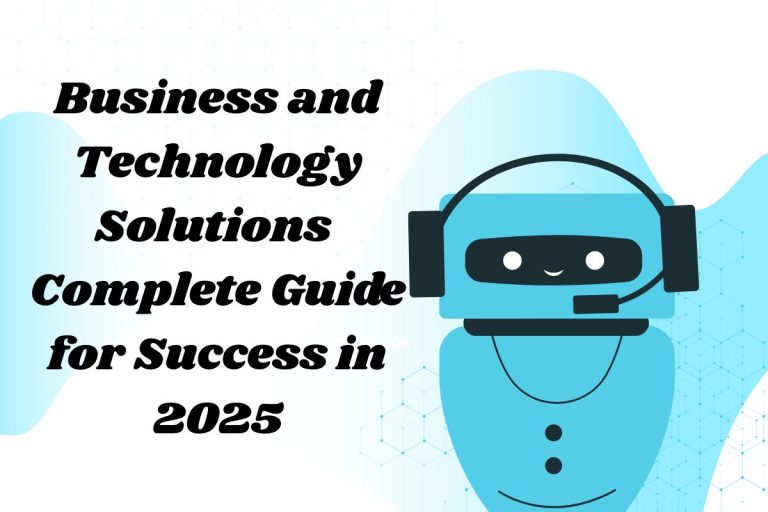Imagine you’ve been working on an important school project or office presentation for hours, and suddenly the most critical file gets accidentally deleted. What would you do? Would you format the entire computer or rush to an expert? That’s definitely a troubling situation.But technology has found a smart solution for this, called Granular Recovery Technology (GRT).
This is a magical technology that allows you to recover just that one file, email, or small piece of data that you’ve lost, without restoring the entire system. In this article, we’ll learn what this technology is, how it works, and why it’s essential for your business or personal data.
What Exactly is Granular Recovery Technology?
Let’s understand this with a library example.
Suppose you need just one specific book from the library. You go to the library, tell the librarian the book’s name, and they find and give you exactly that book. This is just like Granular Recovery fast, easy, and purposeful work.
Now imagine if the librarian said you’d have to take home every book in the library just to get one book. This would be like Full System Restore – a very time-consuming and labor intensive task.
That’s exactly the difference! Granular Recovery Technology is the process where instead of restoring all data from backup, you selectively retrieve small items as needed (like one file, one email, one database entry).
PEOPLE ALSO READ : Technology for Homeschooling Your Complete Guide to Digital Learning Success in 2025
How Does This Technology Work?
Granular Recovery Technology uses advanced algorithms to identify and restore specific files, emails, or data from backups. The process works like this:
Step 1: The backup system first creates a snapshot of the data, which is stored in a separate location.
Step 2: When your computer or server backs up data, GRT enabled software doesn’t just copy the data, but also creates a detailed “index” or “map” through data indexing and cataloging.
Step 3: When you need to restore something, you tell the software what you need. The software checks this indexed map and quickly finds that specific item.
Step 4: The system extracts only the required data, leaving the rest of the system untouched.
Modern tools also use Machine Learning and Artificial Intelligence to make this process even more streamlined and accurate, reducing manual work.
Granular Recovery vs. Full System Restore: Understanding the Difference
The table below helps you easily understand the difference between these two:
| Feature | Granular Recovery | Full System Restore |
| Speed | Very Fast (Minutes) | Very Slow (Can take hours) |
| Data Requirement | Only necessary item is restored | Entire system is restored |
| System Impact | No major impact, work continues | System shuts down (Downtime) |
| Best Use | For one file, email, or database record | After complete server crash or disaster |
| Cost | Fewer resources needed, cheaper | More storage and time needed, expensive |

Key Benefits of Granular Recovery Technology
This technology isn’t just for recovering data, but has many other benefits:
Instant Recovery, Minimal Downtime
When your business is running, you can’t afford even a minute of downtime. With GRT help, you can restore data in minutes, and your work doesn’t stop. There’s no need for system shutdown or full restore, so critical business processes can continue running.
Storage and Cost Savings
To restore a complete backup, you need extra storage space. With GRT, you only extract what’s necessary, saving both storage and resources. This approach proves very cost-effective in the long term as both hardware resources and labor are reduced.
Easy Error Correction and Precision
If an employee accidentally deletes an important client email, you can immediately restore just that email without worry. This precision recovery is much more efficient than traditional backup methods.
Strengthen Disaster Recovery Plan
This technology is a crucial part of your Disaster Recovery Plan. By quickly resolving small data loss problems, it prevents them from becoming major disasters. IT teams can handle incidents more effectively.
Enhanced Data Security and Compliance
Modern GRT tools come with advanced encryption features that protect data from unauthorized access during the restore process. Access control features ensure only authorized personnel can initiate recovery operations. This technology is also helpful for compliance regulations like GDPR since you can restore only legally required data.
PEOPLE ALSO READ : How Does Technology Help Students Learn Financial Literacy Graph A Student’s Guide to Modern Money Management
Use Cases for GRT in IT Service Management (ITSM)
Granular Recovery Technology is very common in IT Service Management environments:
Email Recovery: Restoring a specific deleted email or entire mailbox from Microsoft Outlook/365 without affecting the entire email system.
Database Precision Recovery: Recovering just one customer’s record or specific table from SQL or Oracle database without restoring the entire database.
Virtual Machine File Recovery: Efficiently restoring an accidentally deleted file or folder from within a running Virtual Machine.
SharePoint/OneDrive Recovery: Restoring just one document, list, or entire site to its previous state.
Configuration Management: Restoring specific configuration items (CIs) in ITSM tools without affecting the entire CMDB.
Ticket and Incident Data: Selectively recovering accidentally deleted tickets or incident records from service desk platforms.
Case Study: How “Creative Solutions Pvt. Ltd.” Saved Their Project
“Creative Solutions” is a small marketing agency. One day, their senior designer’s computer suddenly had problems and their most important project file got corrupted. The deadline was the next day and everyone was worried.
They had a backup of the entire server, but if they restored it, a whole day’s work of all employees would be wasted.
Fortunately, their IT Manager had installed backup software with Granular Recovery Technology some time ago. He immediately extracted just the old version of that one corrupted file from the backup and gave it to the designer within 15 minutes.
Result: The agency completed the project on time, the client was happy, and the rest of the team’s work wasn’t wasted either. All this was possible because of GRT.
How to Choose the Right GRT Solution for Your Business?
If you’re looking for a GRT solution for your business, keep these things in mind:
Understand Your Needs: What do you need to backup? Emails, databases, or virtual machines?
Check Compatibility: The solution should work with your existing systems (like VMware, Hyper-V, Microsoft 365).
Easy to Use: The software interface should be simple so you can use it yourself when needed.
Support and Reviews: Check what the company’s technical support is like and what other users’ reviews say.
Popular Granular Recovery Tools
Veeam Backup & Replication: Very popular for virtual environments and provides comprehensive GRT features.
Acronis Cyber Protect: A complete data protection solution with security features that offers advanced encryption and access controls.
Veritas NetBackup: A powerful enterprise-grade tool for large businesses and complex IT environments.
Commvault Complete Data Protection: Comprehensive recovery solution for hybrid cloud environments.
Rubrik Cloud Data Management: Modern cloud-native backup and recovery platform.
Dell EMC PowerProtect: Enterprise-level data protection with granular recovery capabilities.
Challenges and Limitations
Like every technology, this also has some challenges:
Initial Setup: Setting up some GRT tools can be a bit difficult and requires advanced technical skills. This requires a more complex setup compared to traditional backup solutions.
Compatibility Issues: Sometimes this doesn’t work properly with old applications or custom software. Not all backup systems or environments are GRT-compatible.
Backup Time: Due to indexing, backup takes a bit more time.
Higher Initial Costs: The initial cost of advanced GRT tools is higher than basic backup systems, but they prove cost-effective in the long term.
Large-Scale Environment Challenges: Retrieving specific data from massive systems or databases in large IT environments can be time-consuming if not properly optimized.
Technical Expertise Required: Effective implementation requires specialized knowledge and training.
Role of Cloud Computing in GRT
Modern cloud computing has made Granular Recovery Technology even more powerful:
Cloud-Based Indexing: Cloud platforms provide advanced indexing capabilities that enable faster search and recovery.
Scalability: Cloud infrastructure provides automatic scaling, allowing large-scale recovery operations to be handled efficiently.
Cross-Platform Recovery: Cloud-based GRT solutions provide consistent recovery experience across different platforms (on-premises, hybrid, multi-cloud).
AI-Powered Recovery: Cloud providers are using machine learning algorithms for predictive recovery, which can anticipate which data is more likely to need restoration.

The Future of Granular Recovery Technology
Technology’s future is becoming smarter. Soon, with the help of AI and Machine Learning, GRT solutions will automatically predict which data is important and when it might need to be restored, making the data recovery process even faster and easier.
Predictive Analytics: Future systems will analyze data patterns to predict when and which data loss might occur.
Automated Recovery: AI-driven systems will automatically identify critical data and take preemptive recovery actions.
Real-Time Recovery: Advanced algorithms will enable continuous data protection and instant recovery in real-time.
Enhanced Security Integration: Future GRT solutions will be integrated with advanced threat detection and response capabilities.
Conclusion
Granular Recovery Technology is no longer a luxury, but a necessity for every small and large business. It not only saves your valuable data but also protects your time, money, and business reputation. Just as you keep a first-aid kit at home, GRT is a “digital first-aid kit” for your digital data that prevents any small problem from becoming a major disaster.
PEOPLE ALSO READ :Coosa Valley Tech Rome GA Complete Guide to Education and Services
Frequently Asked Questions (FAQs)
1. What’s the simple difference between granular recovery and full restore?
In granular recovery, you recover only one file or email (which is necessary) from backup. In full restore, you bring the entire computer or server back to its previous state.
2. Is this technology expensive?
Initially, its cost may seem a bit high due to advanced tools and setup, but compared to losses from data loss, downtime costs, and resource optimization, it’s a very cost-effective solution. The long-term ROI is excellent.
3. Can I use this for my personal computer?
Absolutely! Many modern backup software (like Acronis True Image) now provide granular recovery features for home users too.
4. What’s the main difference between GRT and basic data restore?
In basic restore, you have to restore the entire system or backup, which takes more time, resources, and downtime. With GRT, you restore precisely only the data you need, improving both efficiency and speed.
5. Does GRT affect data security?
No, rather it enhances data security. Modern GRT tools come with advanced encryption, access controls, and compliance features. Selective restoration minimizes security risks.
READ MORE : Super Converters







